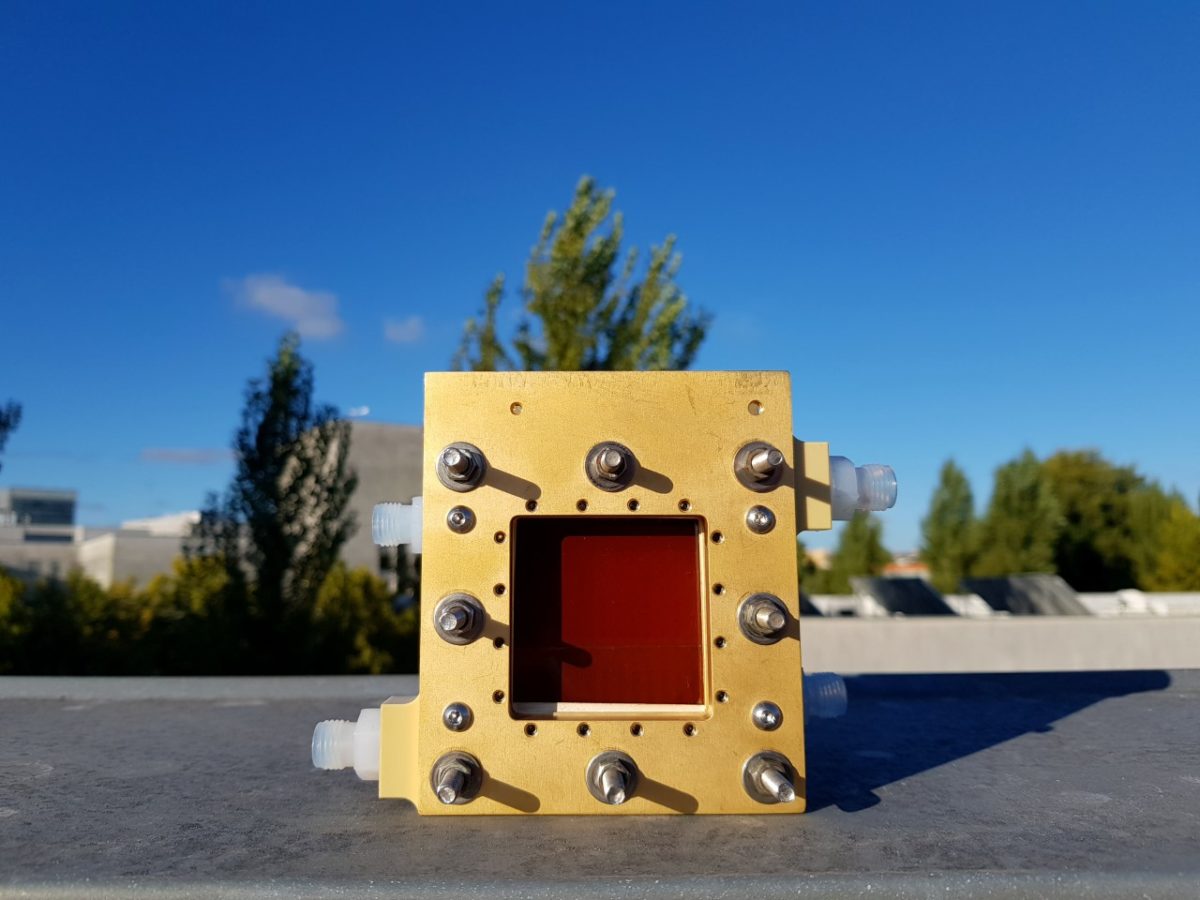From pv magazine International
Solar redox flow cells (SRFCs) are devices that can store electricity by harvesting sunlight via a photoelectrochemical (PE) panel. These storage devices are attracting increasing interest from scientists and research institutes and have been developed so far only at research level.
Two of the biggest challenges these batteries have to overcome, along with other minor issues, are the fact that their performance is restricted by inefficient photoelectrochemical reactions and that their storage capacity is limited by the physical dimension of solid electrodes.
With this in mind, scientists at the University of Porto have recently developed a solar redox flow cell for decentralized, residential energy storage.
“In our work, we designed, built, and tested the highest photoactive-area solar redox flow cell device ever reported to date,” the research leading author, Telmo da Silva Lopes, told pv magazine. “We also provided important device design guidelines that will help develop future up-scaled SRFCs, an emerging technology that uses semiconductor-based photoelectrodes to store solar energy in chemical bonds and heat.”
Called SolarFlow25, the device was designed to optimize light absorption by the semiconductor and ensure effective diffusion of redox species while offering minimal electronic and ionic transport resistance.
The device has a 25cm2 photoactive area and was built with a large-area PE cell linked to the system structure via small stainless steel screws and an auxiliary metallic rim. “These screws create an electrical path between the conductive metal layer on the perimeter and edges of the PE and the end plate, allowing for … effective current collection,” the Portuguese group explained. “To assemble the cell, both anodic and cathodic compartments were screwed together using bolts with a Nafion 117 membrane in between.”
The system also relies on ferrocyanide/anthraquinone (2,7-AQDS) redox flow chemistry and nanostructured hematite (α-Fe2O3) photoelectrodes combined in series with a dye-sensitized solar cell (DSSC) that is able to produce a photocurrent of approximately 40 mA.
The SRFC was connected to a conventional redox flow cell (RFC) and its performance was tested. “By connecting the SolarFlow25 cell with a conventional RFC, the electrochemical fuels were photocharged and discharged in continuous operation exhibiting an unbiased photocurrent of around 11 mA during photocharge (100 mW/cm2) and a round-trip efficiency of around 0.15%,” the academics emphasized. “These photocharging results were further improved using a sponge-like nanocube, α -Fe2O3, photoelectrode that provided an unbiased photocurrent of around 40 mA during photocharge, resulting in a round-trip efficiency of around 0.44% during the 10 cycle/14-hour demonstration.”
These efficiency levels are claimed to be fourfold higher than any other results reported for α-Fe2O3-driven SRFCs to date.
The academics stressed that no leakage or electrical problems were detected for the device during the experiment, which they said lays the ground for further improving the proposed technology. “We hope that our contribution will help bring SRFCs closer to commercialization, on its way to revolutionize energy storage for households and stationary applications,” Silva Lopes concluded.
The device is described in the study “A 25 cm2 Solar Redox Flow Cell: Facing the Engineering Challenges of Upscaling,” published in Advanced Energy Materials.
A low-cost redox flow battery powered by perovskite-silicon tandem solar cells was presented in July 2020 by researchers from the Wisconsin-Madison and Utah State universities, in the United States. This device combines photo-electrochemical solar cells with aqueous organic redox-flow battery technology and has solar-to-output efficiency of 20.1%.
This content is protected by copyright and may not be reused. If you want to cooperate with us and would like to reuse some of our content, please contact: editors@pv-magazine.com.









By submitting this form you agree to pv magazine using your data for the purposes of publishing your comment.
Your personal data will only be disclosed or otherwise transmitted to third parties for the purposes of spam filtering or if this is necessary for technical maintenance of the website. Any other transfer to third parties will not take place unless this is justified on the basis of applicable data protection regulations or if pv magazine is legally obliged to do so.
You may revoke this consent at any time with effect for the future, in which case your personal data will be deleted immediately. Otherwise, your data will be deleted if pv magazine has processed your request or the purpose of data storage is fulfilled.
Further information on data privacy can be found in our Data Protection Policy.